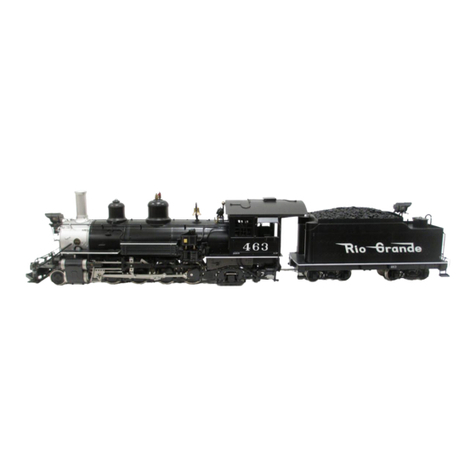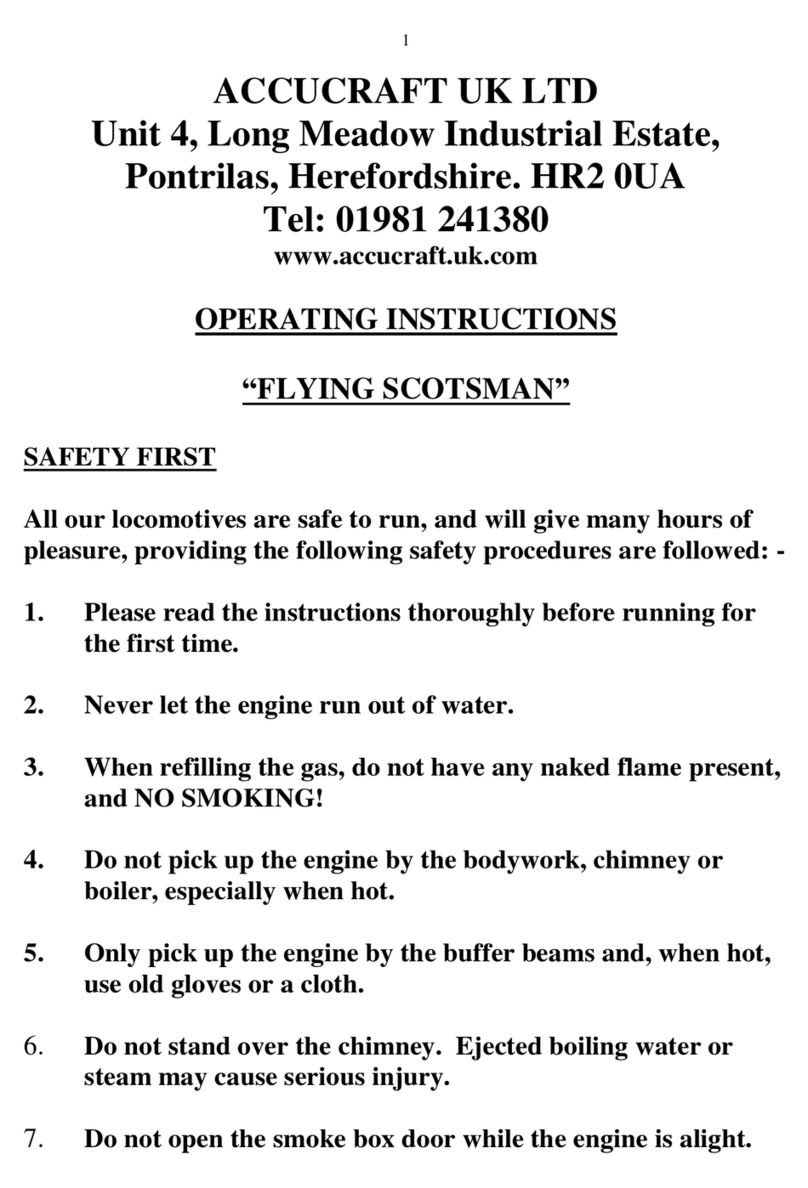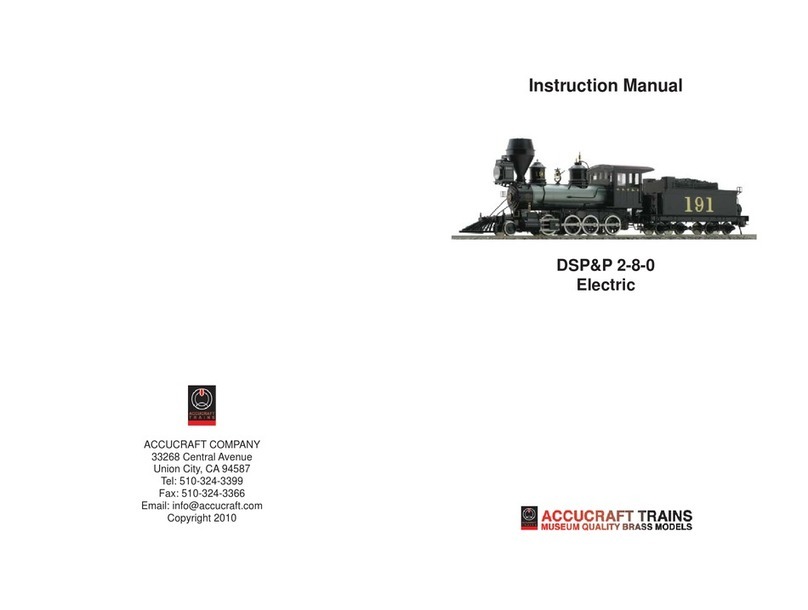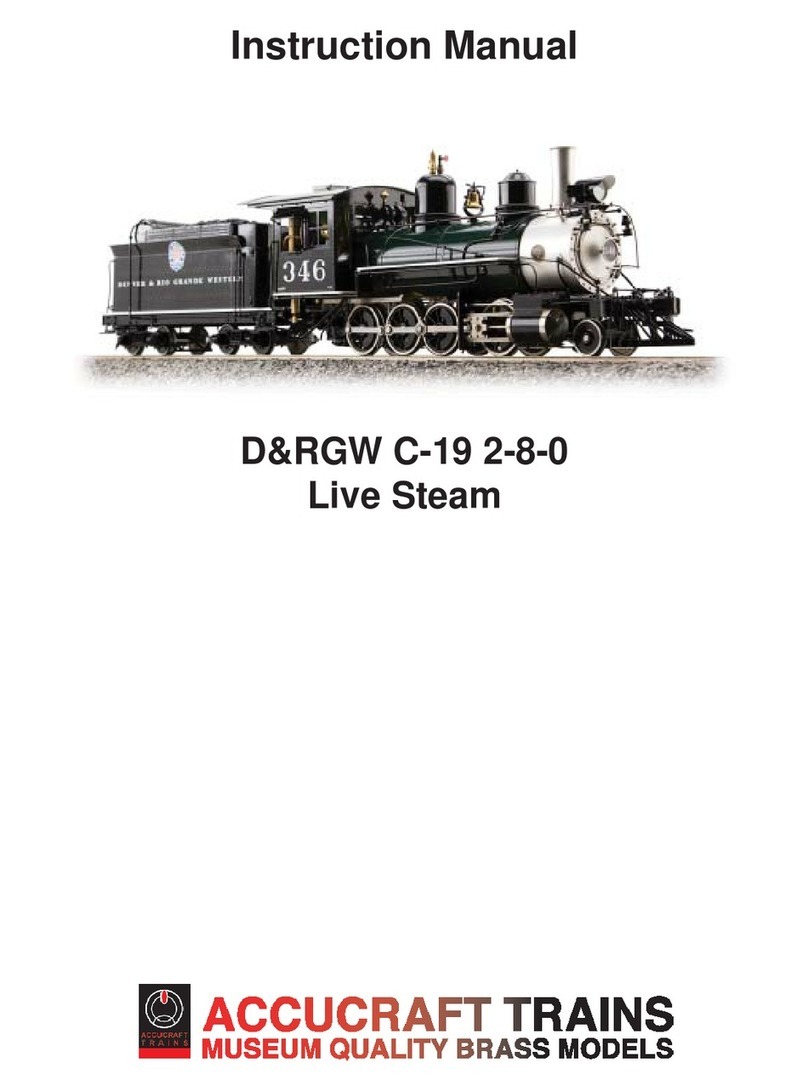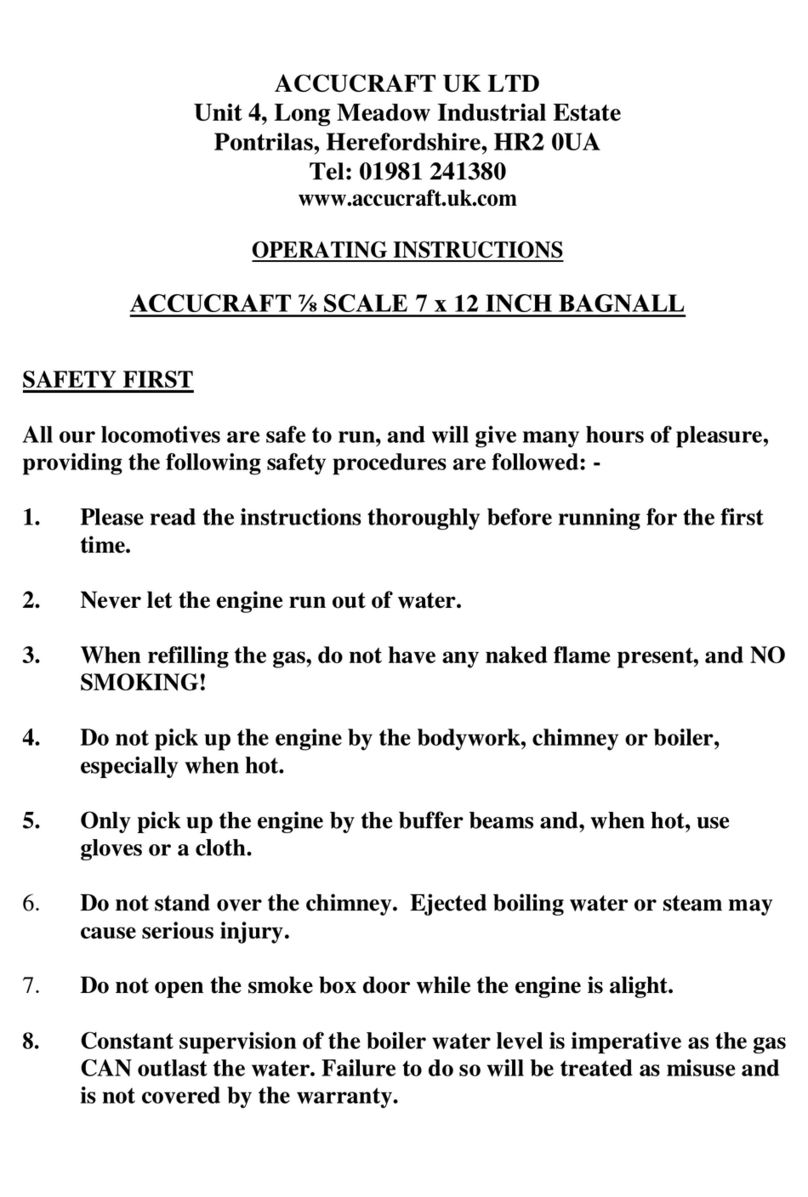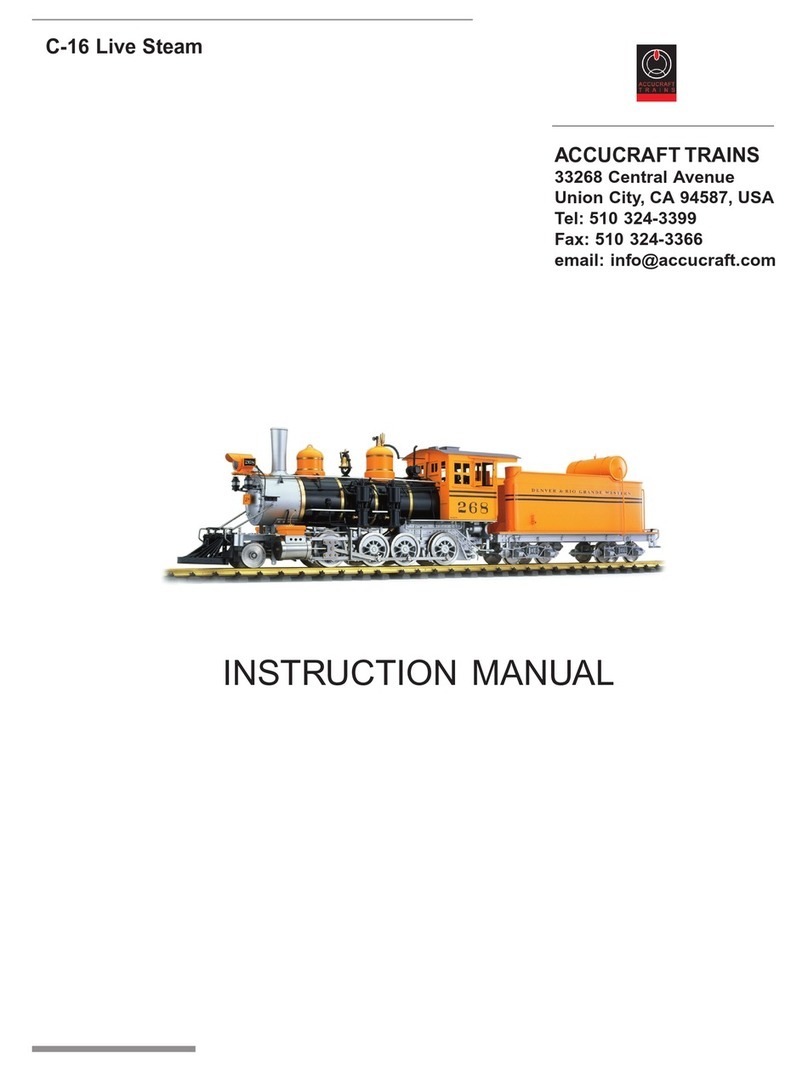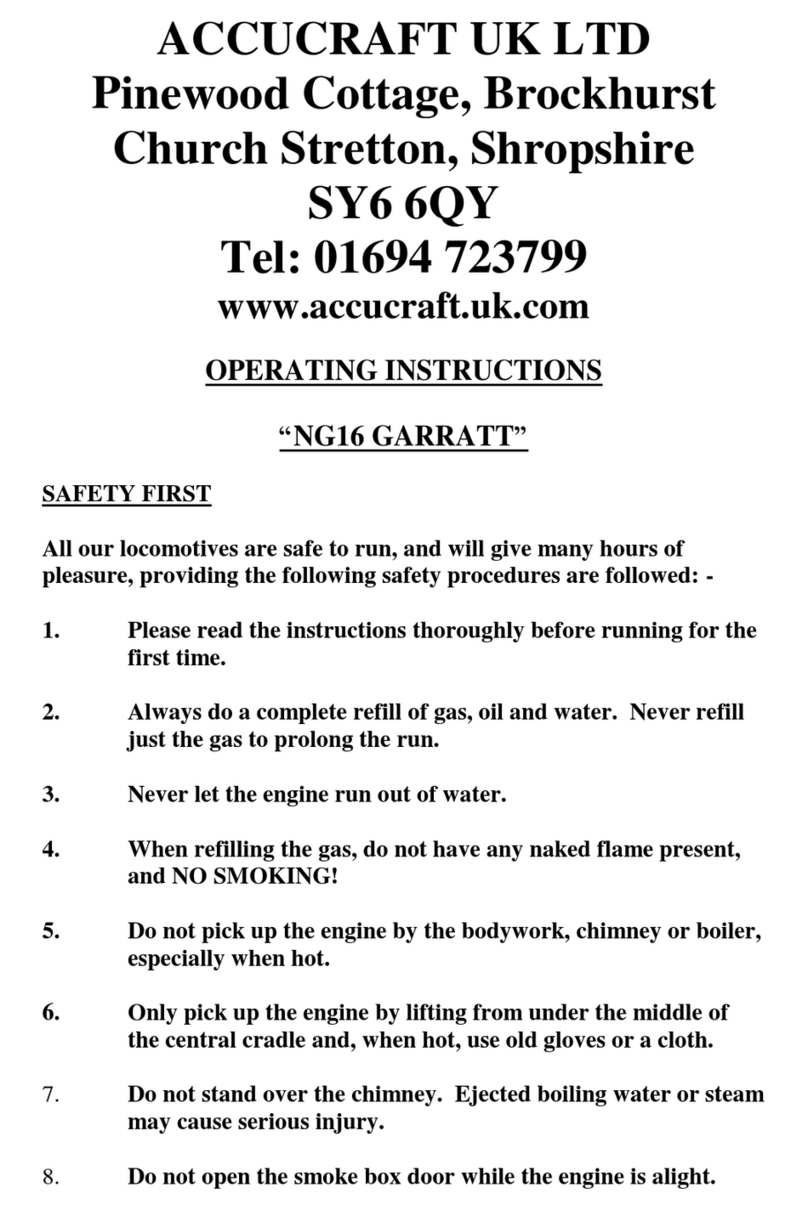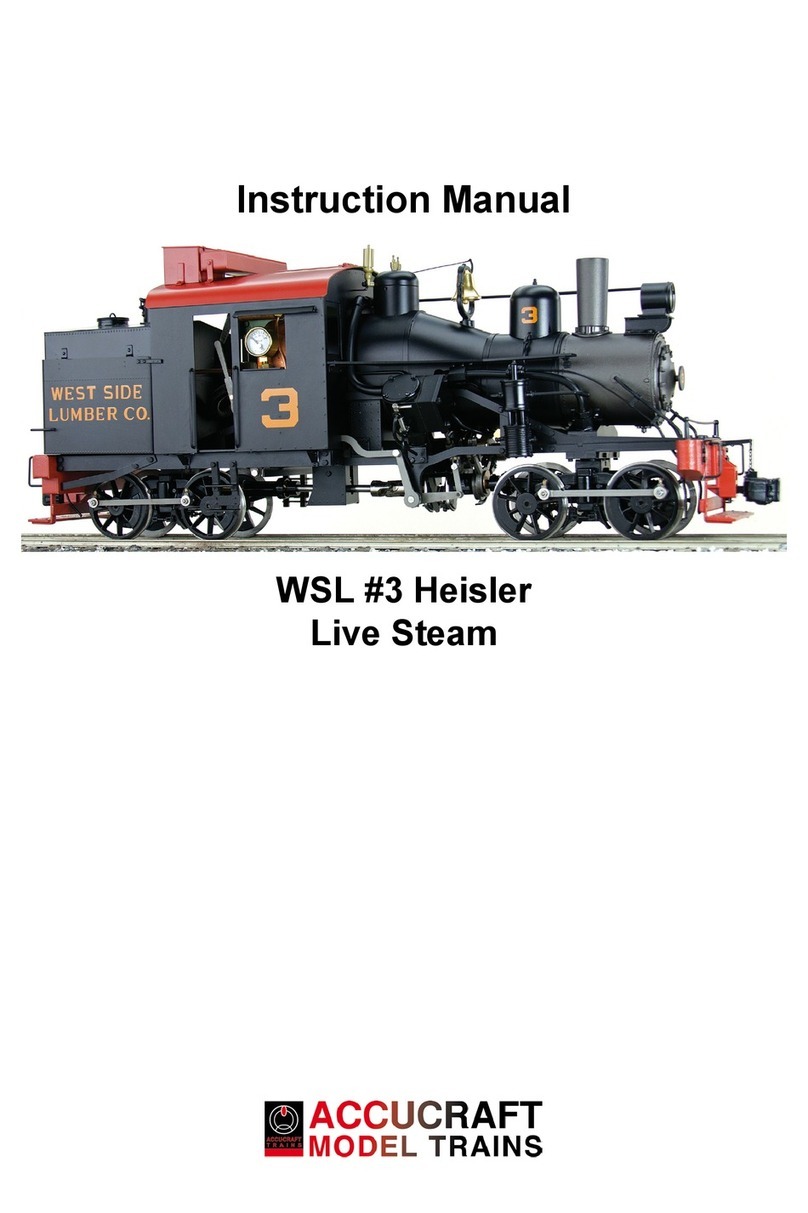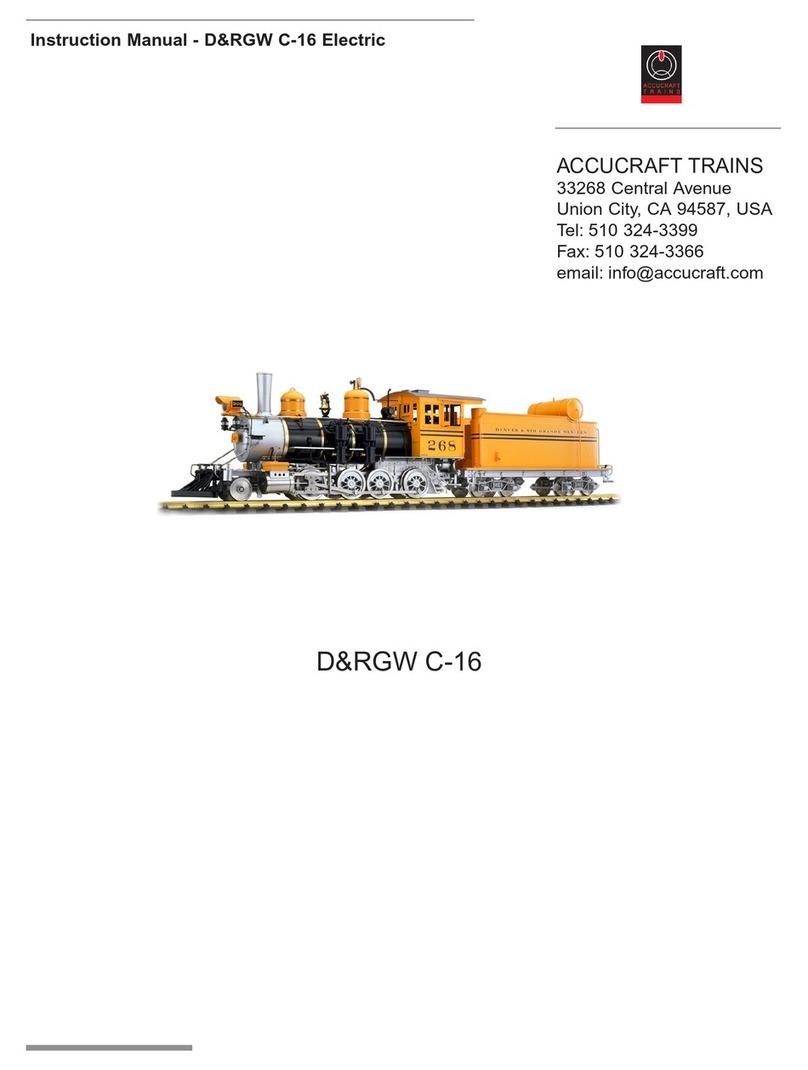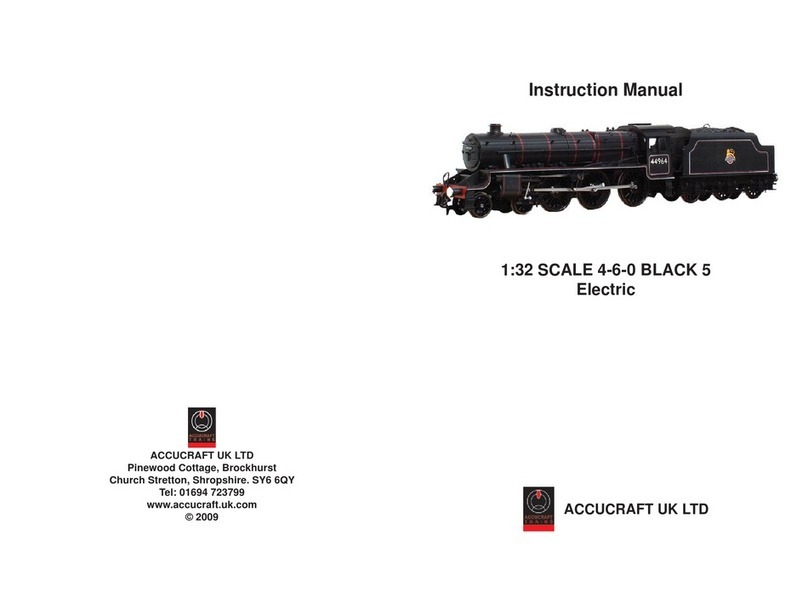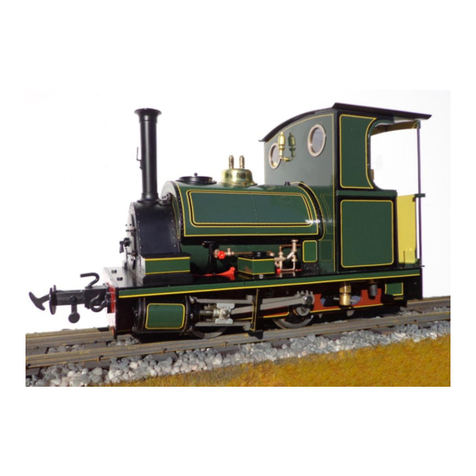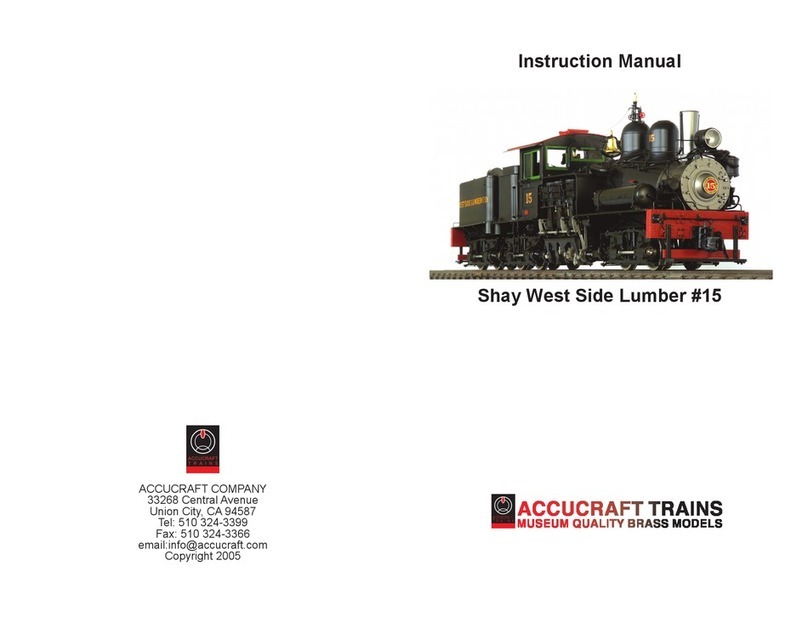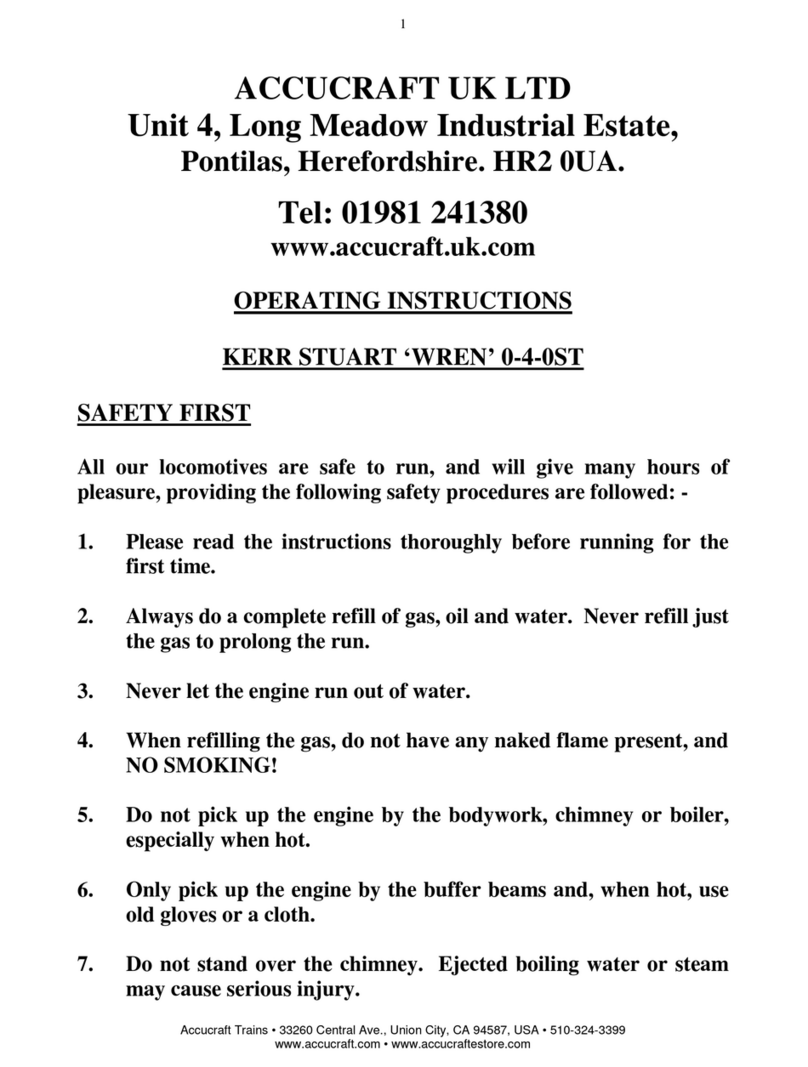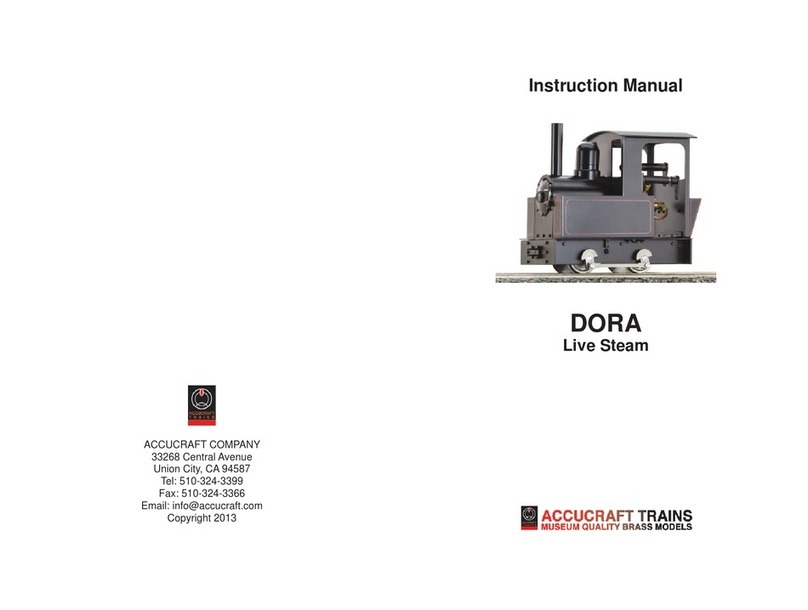GUARANTEE
Accucraft UK Ltd will remedy any defect or malfunction occurring with this product during a two year guarantee period
from date of purchase. This guarantee does not extend to malfunctions or defects caused by damage or unreasonable use,
including the failure to provide the correct types of lubrication and water or by not controlling the gas correctly.
If a claim is to be made within the two year guarantee period, in the first instance, return both the product and guarantee
card to your dealer. In the event of your problem not being able to be fixed by your dealer, he will contact us for advice.
If necessary we will arrange for the product to be returned to our service department for repair.
This guarantee is quoted in addition to all legal rights of the purchaser under the Sale of Goods Act, and shall expire two
years from the date of purchase. Under no circumstances shall Accucraft UK Ltd be responsible for any consequential
damages arising in regard to any Accucraft UK Ltd product.
__________________________________________________________________________
CARE OF YOUR LOC0MOTIVE
Proper lubrication is most important, but must not be overdone.
Care should be taken when removing the loco from its packaging, as any levering action using projecting
parts (e.g. buffers) may result in damage.
Check with your dealer that these locomotives wheel standards are compatible with your track system.
Ensure that your track is in good condition and well maintained.
Keep the engine free of dust and dirt. Debris such as earth and gravel in the motion will lead to premature
wear and failure.
Always use steam oil in the lubricator, never ordinary household oil.
Never light the burner without water in the boiler.
Always control the gas correctly and do not have the fire too high so it goes into the smoke box and damages
materials, paint, or wheel insulation.
__________________________________________________________________________
SAFETY
Always use this product in a well-ventilated area. Never get directly above the chimney, boiling water can
sometimes be ejected from it.
When in steam, and for some time afterwards the engine will be very hot. HANDLE WITH CARE.
This model has many small parts and should be handled with care. It is not suitable for children under the
age of 14 years old.
__________________________________________________________________________
ACCUCRAFT UK LTD, UNIT 4, LONG MEADOW INDUSTRIAL ESTATE, PONTRILAS,
HEREFORDSHIRE. HR2 0UA.
LOCOMOTIVE LOG BOOK
Loco Serial No: ……................................ Boiler Serial No: ……………………………….
Gas Tank Serial No: …………………………..
First Registered Owner: …………………………………………………
Date Purchased: ………………………………………………………….
Second Registered Owner: ………………………………………………
Date Purchased: ………………………………………………………….
